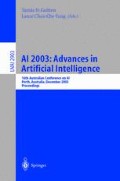Abstract
Metadata plays an important role in discovering, collecting, extracting and aggregating Web data. This paper proposes a method of constructing metadata for a specific topic. The method uses Web pages that are located in a site and are linked from a listing page. Web pages of recipes, real estates, used cars, hotels and syllabi are typical examples of such pages. We call them a series of Web documents. A series of Web pages have the same appearance when a user views them with a browser, because it is often the case that they are written with the same tag pattern. The method uses the tag-pattern as the common structure of the Web pages.
Individual contents of the pages appear as plain texts embedded between two consecutive tags. If we remove the tags, it becomes a sequence of plain texts. The plain texts in the same relative position can be interpreted as attribute values if we presume that the pages represent records of the same kind.
Most of these plain texts in the same position vary page to page. But, it may happen that the same texts show up at the same relative position in almost all pages. These constant texts can be considered as attribute names. “Location”, “Rating” and “Travel from Airport” are examples of such constant texts for pages of hotel information. If the frequency of a text is higher than a threshold, we accept it as a component of metadata.
If we mark a constant text with “N” and a variable text with “V”, the sequence of plain texts forms a series of N’s and V’s. A page in a series contain two kinds of NV sequence pattern. The first pattern is (NV)n, which we call vertical, where an attribute value follows the attribute name immediately. The second pattern is N n V n, which we call horizontal, where names occur in the first row and the same number of values follow in the next row. Thus we can understand the meaning of values and can construct records from a series of Web pages.
Access this chapter
Tax calculation will be finalised at checkout
Purchases are for personal use only
Preview
Unable to display preview. Download preview PDF.
References
Aggarwal, C.C., Al-Garawi, F., Yu, P.S.: Intelligent Crawling on the World Wide Web with Arbitrary Predicates. In: Proc. WWW 2001 (2001), http://www10.org/cdrom/papers/110/index.html
Arasu, A., Garcia-Molina, H.: Extracting Structured Data from Web Pages. In: Proc. of ACM SIGMOD/PODS 2003 Conf., pp. 337–348 (2003)
Chakrabarti, S., Punera, K., Subramanyam, M.: Accelerated Focused Crawling through Online Relevance Feedback. In: Proc. WWW 2002 (2002), http://www2002.org/CDROM/refereed/336/index.html
Chang, C.H., Lui, S.C., Wu, Y.C.: Applying Pattern Mining to Web Information Mining. In: Cheung, D., Williams, G.J., Li, Q. (eds.) PAKDD 2001. LNCS (LNAI), vol. 2035, pp. 4–16. Springer, Heidelberg (2001)
Cruz, I.F., Borisov, S., Marks, M.A., Webb, T.R.: Measuring Structural Similarity Among Web Documents: Preliminary Results. In: Hersch, R.D., André, J., Brown, H. (eds.) RIDT 1998 and EPub 1998. LNCS, vol. 1375, pp. 513–524. Springer, Heidelberg (1998)
Flesca, S., Manco, G., Masciari, E., Pontieri, L., Pugliese, A.: Detecting Structural Similarities between XML Documents. In: Proc. WEBDB 2002 (2002), http://feast.ucsd.edu/webdb2002/papers/19.pdf
Han, J., Pei, J., Yin, Y.: Mining Frequent Patterns without Candidate Generation. In: Proc. ACM SIGMOD Intl. Conf. Management of Data, pp. 1–12 (2000)
Lee, J.W., Lee, K., Kim, W.: Preparations for semantics-based XML mining. In: Proc. IEEE Int. Conf. od Data Mining (ICDM) 2001, pp. 345–352 (2001)
Lerman, K., Knoblock, C., Minton, S.: Automatic Data Extraction from Lists and Tables in Web Sources, http://www.cs.waikato.ac.nz/~ml/publications/1999/99SJC-GH-Innovative-apps.pdf
Leung, H., Chung, F., Chan, S.C.: A New Sequential Mining Approach to XML Document Similarity Computation. In: Whang, K.-Y., Jeon, J., Shim, K., Srivastava, J. (eds.) PAKDD 2003. LNCS (LNAI), vol. 2637, Springer, Heidelberg (2003)
Miyahara, T., Suzuki, Y., Shoudai, T., Uchida, T., Hirokawa, S., Takahashi, K., Ueda, H.: Discovery of Frequent Tag Tree Patterns in Semistructured Web Documents. In: PAKDD 2003. LNCS (LNAI), vol. 2637, pp. 430–436. Springer, Heidelberg (2003)
Taguchi, T., Koga, Y., Hirokawa, S.: Integration of Search Sites of the World Wide Web. In: Proc. CUM, vol. 2, pp. 25–32 (2000)
Yamada, S., Matsunaga, Y., Itoh, E., Hirokawa, S.: A study of design for intelligent web syllabus crawling agent. Trans. of IEICE D-I J86(8), 566–574 (2003) (in Japanese)
Umehara, M., Iwanuma, K., Nagai, H.: f A Case-Based Semi-automatic Transformation from HTML Documents to XML Ones –Using the Similarity between HTML Documents Constituting a Series. Journal of JSAI 16(5), 408–416 (2001)
Marshall, C.C.: Making metadata: a study of metadata creation for a mixed physical-digital collection DL 1998. In: Proc. of the 3rd ACM Int’l Conf. on Digital libraries, pp. 162–171 (1998)
Handschuh, S., Staab, S.: Authoring and annotation of web pages in CREAM. In: Proc. WWW 2002 (2002), http://www2002.org/CDROM/refereed/506/index.html
Stuckenschmidt, H., van Harmelen, F.: Ontology-based metadata generation from semistructured information. In: Proc. of K-CAP 2001, pp. 440–444 (2001)
Author information
Authors and Affiliations
Editor information
Editors and Affiliations
Rights and permissions
Copyright information
© 2003 Springer-Verlag Berlin Heidelberg
About this paper
Cite this paper
Hirokawa, S., Itoh, E., Miyahara, T. (2003). Semi-Automatic Construction of Metadata from a Series of Web Documents. In: Gedeon, T.(.D., Fung, L.C.C. (eds) AI 2003: Advances in Artificial Intelligence. AI 2003. Lecture Notes in Computer Science(), vol 2903. Springer, Berlin, Heidelberg. https://doi.org/10.1007/978-3-540-24581-0_81
Download citation
DOI: https://doi.org/10.1007/978-3-540-24581-0_81
Publisher Name: Springer, Berlin, Heidelberg
Print ISBN: 978-3-540-20646-0
Online ISBN: 978-3-540-24581-0
eBook Packages: Springer Book Archive

